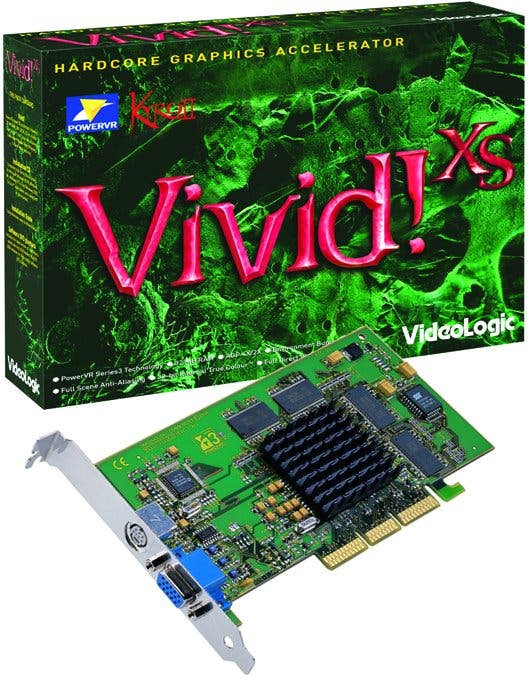Imagination Technologies extend partnership with ST
STMicroelectronics to develop Graphics Accelerators based on PowerVR Series4 and Series5
Following on from the recent success of Kyro and Kyro II, which are based on the PowerVR Series3 chip, Imagination Technologies have chosen to extend their partnership with bedfellow STMicroelectronics. The pair will now develop and manufacture graphics accelerators based on PowerVR Series4 and Series5 technology designed by Imagination's PowerVR Technologies division. Sticking to their promise of high levels of visual quality and performance without the price premium, Series4 and Series5 will once again draw on the now-famous Tile Based Rendering techniques seen on the Kyro II. If you did not read our coverage of the Kyro II, here's a brief recap on the technology: Kyro II uses something called Tile Based Rendering, where the display is split into small areas called tiles that are rendered independently. The Kyro II also applies Hidden Surface Removal (HSR), where it determines which surfaces are displayed and which remain hidden before creating 3D triangles only for displayed surfaces. It maps textures only onto visible surfaces. All of this results in optimal use of memory bandwidth, a higher fill rate and impressive visual quality with the loss of performance. The reason for its visual quality are plenty. It has the capability to handle 8-layer multitexturing, where up to 8 layers of different textures can be combined together in order to obtain lifelike 3D environments with more realistic details. The increase in visual quality is achieved by texture blending in the local tile buffer and not just laying textures one on top of another. Kyro II also has Internal True Colour at 32-bit, so that all blending operations in each tile are performed on-chip in 32-bit colour with no loss of colour precision during the process. Other features of the Kyro II include Full Scene Anti-Aliasing support, with reasonable results. The Hidden Surface Removal means a lot more bandwidth is available with a higher fill rate, so things don't get quite as choked as they do on rival cards. Another notable feature is Environmental Bump Mapping (EBM), which is used to simulate rough or bump textures with irregularities in their shading. It can do this by, for example, adding a base texture, then a bump texture, then a light texture or an environmental bump. And so on. When we met an Imagination Technologies representative recently, he was understandably antsy about leaking Kyro III details, and we couldn't confirm very much. Rumour has it though that the Kyro III (which will surely come of one of these new PowerVR series), will have a 180-250MHz clock, 4 pipelines with two textures per pipeline, a T&L unit for the first time and will do more tile calculations in hardware. We've also heard internal names for it like STG 5000. Those same rumour mongerers claim the Kyro III will be made on a 0.13 micron fabrication process and will end up with a fill rate some four times that of the Kyro II. It's all speculation for the moment, however, with very little officially confirmed. Related Feature - Visuarvivor


